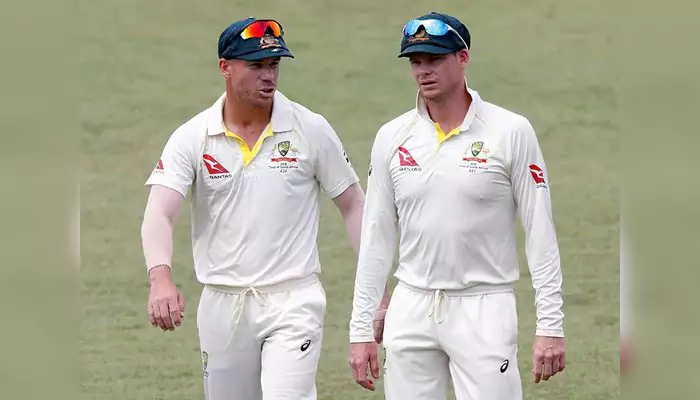
Credit: @thecricketmen
Sandpaper scratches Australian cricket's image; Smith, Warner banned in ball-tampering scandal
The 28th of March, 2018, will forever be etched in cricketing infamy. On that day, Cricket Australia (CA) dropped a bombshell: captain Steve Smith and vice captain David Warner had been banned for 12 months for their roles in a pre-meditated plan to tamper with the ball during the Cape Town Test against South Africa. This unprecedented move, dubbed "Sandpapergate" by the media, plunged Australian cricket into its darkest hour, shattering fan trust and raising serious questions about the team's leadership and culture.
The incident itself unfolded during the third day of the test. Television cameras captured a scene that sent shivers down the spines of cricket purists everywhere: Cameron Bancroft, a young batsman entrusted with the responsibility of upholding the spirit of the game, using sandpaper to alter the condition of the ball.
The investigation that followed painted a grim picture. Warner, according to CA, emerged as the architect of the plan. He not only instructed Bancroft on the technique but even resorted to demonstrating it with sandpaper itself. Smith, the leader of the pack, found himself equally culpable.

Credit: @ESPNcricinfo
Cameroon Bancroft during the match
CA's findings revealed that he was aware of the plan and did nothing to stop it. Worse yet, when the scheme unravelled on camera, Smith attempted to conceal it, further tarnishing the image of Australian cricket.
To add insult to injury, the post-match press conference saw both Smith and Bancroft resort to blatant lies, claiming the yellow object spotted on camera was nothing more than adhesive tape with dirt particles on it. This blatant attempt to mislead the public further eroded trust and deepened the crisis.

A collage of pictures of the incident which rocked cricket globally and became known as Sandpapergate
Cricket Australia, faced with a situation that threatened the very core of the sport's spirit, responded swiftly and decisively. Smith and Warner, the masterminds behind the plot, were hit with the harshest penalties: 12-month bans from international cricket, effectively ending their careers for a year.
Warner, deemed the architect, faced a lifetime captaincy ban, a symbolic gesture underscoring the severity of his actions. Smith, while not directly involved in the act itself, was barred from leading the team for an additional year after his suspension ended. Bancroft received a slightly lighter sentence—a nine-month ban with a 12-month captaincy ban upon completion.
The severity of the punishments reflected the gravity of the situation. CA aimed to send a strong message: tampering with the ball, the very tool of the game, would not be tolerated. However, they left a window open for redemption.
All three players were given the opportunity to challenge the verdicts and were allowed to play club cricket during their bans, maintaining a connection to the sport. Additionally, they were required to perform community service, a move designed to foster introspection and a sense of giving back to the cricketing community.
The ramifications of Sandpapergate were far-reaching. Public outrage reached a fever pitch, with fans and sponsors expressing their disgust. The incident cast a long shadow over Australian cricket, raising questions about the team's culture and leadership. Smith, Warner, and Bancroft faced immense public scrutiny and were forced to endure the harsh glare of media criticism. Sponsors distanced themselves, and the team's reputation was left in tatters.
"I was commentating that day. I was on air."
— talkSPORT (@talkSPORT) March 24, 2020
"The fallout was spectacular."
"It was almost a sociological exercise, as well as a sporting one."
Two years on from #SandPaperGate, @CollinsAdam talks to @talkSPORTDrive about his memories of the event. pic.twitter.com/vOePMbQDyM
Credit: @talkSPORT
Despite the initial despair, Sandpapergate also served as a wake-up call. It forced a hard look at the culture within Australian cricket, prompting introspection and a commitment to change. The hope remained that the players involved would learn from their mistakes and return to the sport with renewed respect for its spirit.
The future of Australian cricket, however, remained uncertain. Rebuilding trust with fans and the cricketing community would be a long and arduous process. Only time will tell if the sport can emerge stronger from this dark chapter in its history.